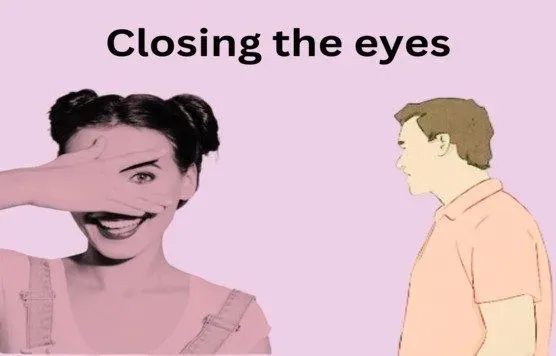15 Psychology Tricks To Read People's Minds Like A Book
How can you read people's brains if their thoughts appear to be sealed away in their own minds? It’s hard to imagine anything more interesting than knowing what your friends or other people are thinking.
This blog post is also Psychology Tricks To Read People's Minds Like A Book: 15 tricks to make people like you.
From social interactions to business meetings and personal relationships.
With this comprehensive guide on powerful psychological tricks to read people's minds like a book, we're here to teach you how.
Knowing is perhaps the most helpful thing there is.
You can genuinely start speculating about other people's emotions by being perceptive and receptive. To read people's minds by using their body language.
Psychology tricks to read people's minds like a book
Understanding People's Thoughts
Even though it may sound disheartening.
Asking someone directly is the greatest approach to learning what they are thinking.
It can improve conversations,
Help avoid misunderstandings and build stronger relationships.
At the same time, you can discover more about their true feelings and thoughts by closely observing them.
Their body language and listening to their tone.
Mentalizing is another term for reading minds.
Wondering what other people could be experiencing may occur even when you have your mind caught up on something else, so you might not even realize you are doing this.
You probably make an educated assumption about what another individual is thinking at least a few times a day. In fact, we do this constantly.
- In the job, in the classroom, or in your personal life, the ability to visualize and comprehend the emotional states of others can be extremely beneficial.
- Developing one's mentalization abilities can be very beneficial for anyone who works in a field where they must have a thorough understanding of other people, such as businesspeople, healthcare professionals, or diplomats.
- Women are generally better at mentalizing than men, according to studies.
- Mentalizing might be challenging for those with autism. Many autistic people use techniques like role-playing talks in advance to deal with their inability to comprehend the feelings of others.
Learn more: To read people's minds like a book!
"To read people's minds like a book" is an idiom. It means to easily understand what someone really thinks,
and feels by watching how they act and their body language, like reading words on a page.
Basically, it means to understand someone's feelings and intentions without them saying it directly.
Key points about the phrase:
Figurative meaning:
It is not mind-reading, but a way to say that someone is very good at understanding people.
By noticing non-verbal signals. Body language and observation:
Body language and observation:
This idiom suggests that one must pay attention to it, which is to watch facial expressions.
Posture, tone of voice, and other visual signs to understand what someone really feels.
Also read: 20 Simple Psychological Mind Tricks That Actually, Work
The first piece of advice is the importance of first meetings.
What they say first. It all starts with that handshake, and first impressions are quite important.
Have you ever noticed how a person reacts when you shake hands? Observe whether they look at you, as they may shake your hand.
A strong handshake conveys assurance, while a weak one may signal uncertainty or shyness.
Avoiding eye contact tends to be one of the signals of nervousness, introversion, and even dishonesty.
When you outstretch your hand for a handclasp, take these into mind. It can set the mood of your meeting and how other people view you...
Also read: 45 Mysterious Love Facts About Love Shock You
Comprehending crossed arms.
Often, you may have noticed that some people sit with their hands folded.
There is more to folding one's arms than just making oneself comfortable.
Hidden meanings can be revealed by this everyday gesture.
There are many people. It could signal a need for self-defense or an attitude of not being satisfied with the talk. But do not make snap judgments.
We can respect limits, and you know when to offer space when we understand this, especially in a controlled manner.
It all comes down to empathy and trying to understand others' points of view.
Also read: The 25 Dark Psychology Tricks of Love Bombing Secret
Number three: closing the eyes.
Most people talk with their eyes; they can express feelings and thoughts that cannot be understood with words alone.
What does it mean when someone closes their eyes? So many people say the eyes are often called the windows of the soul.
When someone avoids eye contact, it can mean a variety of things, from a lack of interest to shyness.
It is not always easy to tell why this happens.
Keep in mind that they may be trying to hide from the world around them.
One way to better understand those people is to look at where they look.
If they are, you often look at other people or things; it could show.w
No interest. But if they try to look down, it could mean they are shy or nervous.
Also read: 15 Things Truly Happy Successful People Choose to Ignore
Number four: Cracking the code of fidgeting—have you ever?
Do you notice someone who becomes restless despite staying in the same position? Check out their constant movements with clothing or hair.
The person may be fixing their clothing while constantly doing things to their hair despite their nervous behavior.
The interpretation of fidgeting by others ends up being inaccurate because fidgeting patterns reveal the emotional states of a person.
Not everyone who perceives fidgeting behavior understands that it does not always imply disinterest in the person.
The primary reason people resort to fidgeting is due to their nervous reactions or discomfort around others.
Observe fidgeting behavior in a person while carrying on a conversation...
People use fidgeting as a way to handle uncertain situations while speaking about uncomfortable matters.
Also read: 40 Fascinating Psychology Facts About Human Behavior
Number five: The dance of personal space.
When someone moves closer to you during a conversation, it can mean one of two things:
Either they feel comfortable with you, or they are enjoying the conversation and like the closeness.
However, this closeness can make some people uncomfortable because it encroaches on their personal space.
If you back off and they keep moving closer, don't worry; their intentions may be harmless.
They simply enjoy your company and being around you, but they may not understand your non-verbal cues for more space.
Also read: 40 Psychology Facts About Personality: What You Need to Know
Number six: The story in their steps.
A person's walking pattern provides important clues about what resides within their mental state.
Confident individuals maintain an open and elevated head position as they walk.
Good posture and self-assurance combine to create this appearance, which demonstrates pride.
People who walk with their heads facing downward show signs of either shyness, lack of confidence, or the wish for friendship.
The way your body moves will expose one of three emotional states, which can be shyness, insecurity, or social desire.
Remember that confident behavior does not necessarily mean arrogant behavior because conversations help reveal their actual personality.
Learning who someone really is by just analyzing their walking patterns counts as a true art.
The skill allows a deeper understanding of others, which you can observe through their foot movements.
Also read: Psychological Facts About Love: 10 Things You Didn't Know.w
Number seven: The silent language of posture.
Similar to the words we use, our body signals reveal our inner thoughts and emotional state to others.
The way you carry yourself, by facing others, holding your shoulders upright, or raising your head, demonstrates your weak confidence and insecurity.
This posture highlights that a person stands prepared to take on the situation. On the other hand,
A person who drops their head while slouching may reveal either shyness, nervousness, or low self-esteem.
Through postural cues, a person can establish compassion towards another person while possibly providing help with their ability to understand others effectively.
The proper support system might help people develop their reading abilities toward others despite current constraints.
Modest changes to your body position have a major influence on how people view you.
Also read:10 Unbelievable Dangerous Dark Psychology Facts Tricks
Number eight: reading emotions through facial cues.
Your ability to read eye signals will improve more quickly when you learn them.
You can determine emotional states through their eyes, including happiness and sadness, as well as upset feelings.
People commonly use their eyes as portals for observing their emotional state. The eyes provide many clues about what is taking place within a person's emotional realm.
Eyes play a critical role in reading people because they show what someone is thinking.
While speaking, do they display a happy expression, or do they appear disinterested?
Their reaction reveals itself through various eye movements, which could include eye-rolling combined with an eyebrow raise and a subtle smirk.
At the moment, do they form wrinkles across their forehead to show their frustration?
By paying attention to facial expressions, you will obtain numerous responses about their true feelings.
Someone who pays attention shows genuine interest in the chat, while someone who pays minimal attention signals no genuine interest.
Also read: 15 Psychological Tricks That Will Make Him Miss You
Number nine: What punctuality reveals.
Learning about someone's reliability signals more about their priorities and personal values than other aspects.
Their timeliness. Time arrival demonstrates what matters to someone because punctuality represents their personal value system.
People who arrive late to everything usually face challenges with proper time management skills.
Their lack of organization or absence of event interest often leads them to present a disorderly appearance at the event.
People who arrive early demonstrate their devotion and respect toward others alongside powerful personal morals.
Observe how people manage their time because it reveals information beyond their capacity for plan execution.
Also read: 20 Psychological Tricks to Make Any Woman Obsessed
Number ten: Emotions in voice.
We often think facial expressions tell us the most about emotions.However, research shows that a person's voice can actually give more confirming evidence exactly to the truth or to a standard, a sign about how they feel.
A quick, choppy speech may mean someone's anxious, while a slow, flat voice could show they're tired.
Listen carefully for emotions hidden in the tone, attitude, speed, and pitch of their voice.
Also read: 10 Only Introverts Will Understand: Love You Secretly
Number eleven: The meaning behind nods.
Watching how someone nods during a talk can tell you a lot about what's going on.
If a person nods a lot when talking to a boss or colleagues, it might show respect or worry about being judged.
Notice nodding in communication patterns; you can uncover deeper meanings in relationships. Remember, communication is more than just words.
Also read: - Read people's minds with these 15 psychological tricks
Number twelve: hand-over-mouth gestures.
When someone covers their mouth while speaking, it often means more than you might think.
- Usually, this body movement can be a sign that they are unsure about what they are saying or uncomfortable with the topic. It can also indicate that they are hiding something or feeling embarrassed.
- In some cases, covering the mouth can be a sign of shock or surprise, especially if it is a quick, sudden, and involuntary reaction to stimuli.
- Cultural differences can also play a role in this hand movement, so consider the person's background when interpreting it.
- Pay attention to this gesture as well as other body language cues to get a full picture of what the person is feeling or thinking.
Remember, these "non-verbal cues" are just pieces of the puzzle.
To truly understand someone, combine your focus for the purpose of being watched carefully with active listening and open communication.
To sharpen your skills through practice to read these subtle signs, you'll become more attuned to others' emotions and thoughts.
Leading to better relationships and interactions in both personal and professional settings.
Also read: Read people's minds with these 15 psychological tricks
Number thirteen: Hand covering the mouth.
When a person puts a hand over his mouth, it is often not just a simple gesture.
- This action may be present in the mind but not immediately available to consciousness; it is an attempt to stop oneself from saying something dishonest or unintelligible. It can be the whole palm, stiff fingers, or even a clenched fist near the mouth.
- Sometimes, people try to disguise this gesture with a fake cough, but the meaning remains the same; they are trying to stop the words.
15 Practical Tips to Read People’s Minds (Well, Almost!)
Number fourteen: Chin rubbing.
Have you ever noticed someone rubbing their chin during a conversation? This simple action can reveal a lot about their thought process.
Chin rubbing often happens when someone is making a decision or evaluating something. They might look in any direction while doing this.
This gesture suggests they're carefully considering your arguments or even assessing you. They're deep in thought, possibly not even aware of where they're looking.
If you're trying to convince them of something, it's a good sign to keep presenting your case.
Also read:50 Interesting Psychology Facts That Will Blow Your Mind
Number fifteen: talking behind others' backs.
Unfortunately, some people have no qualms about sharing others' secrets.
Toxic individuals often lack loyalty and will readily share damaging information with anyone willing to listen.
As the saying goes, "A listening ear is near a running mouth." This aptly describes the behavior of those who've experienced the harmful effects of a toxic person's gossip.
Number sixteen: Clothing choices.
Did you know that leaders can study human nature through the simple act of clothing selection?
People should be better informed that what a person wears shapes their identity.
How people dress contributes to revealing their identity better. The more elegant a person's outfit,
Whether simple or finer, it is more related to his personality and ideals.
It is a silent language that can reveal a person's attitude toward life, their comfort zone,
and even his desire to make an impression.
Remember, it is not about making quick judgments.
Butt about developing empathy and understanding.
Effective communication abilities:
- By exploring the nuances of body language, facial expressions, and other non-verbal signals, you're on your way to becoming an expert in understanding people.
- If you found this article helpful, please show your support by giving it a thumbs up and sharing it with your friends.
Also read: 20 psychological tips to read people's minds instantly.
Also read:30 Interesting psychological facts about women surprise you.







Post a Comment